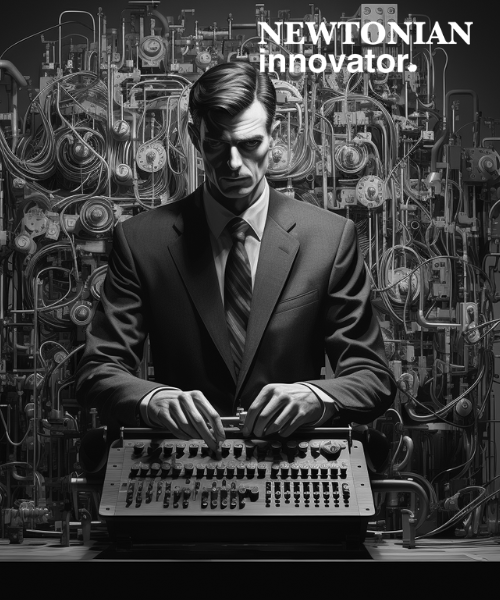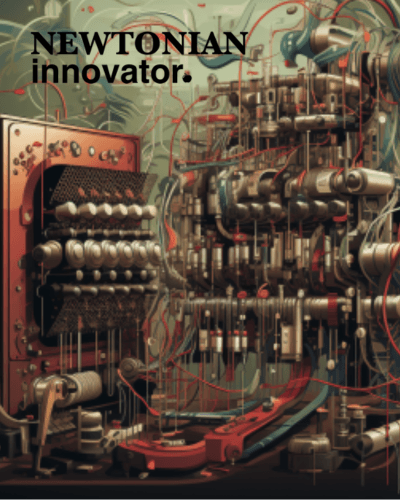In 1936, Turing conceptualized abstract devices now known as Turing Machines to explore the boundaries of computability. The Turing Machine was a thought experiment that imagined a simple machine that could model any computer algorithm by reading and writing symbols on an infinite tape. This was foundational to the theory of computation.
Alan Mathison Turing was born on June 23, 1912 in Maida Vale, London while his father, Julius Mathison Turing, was on leave from his position with the Indian Civil Service. The Turings were an upper middle class British family, and Alan’s parents enrolled him in the prestigious Sherborne boarding school at the age of 13. From a young age, Alan displayed a remarkable aptitude for science and mathematics, though he did not always fit in with his peers at boarding school.
After Sherborne, Turing studied mathematics at King’s College, Cambridge where he was elected a fellow in 1935. It was at Cambridge that Turing wrote his groundbreaking paper “On Computable Numbers” laying out the theoretical basis of what would become the modern computer. During World War II, Turing worked in cryptography at Bletchley Park, helping break the Nazi Enigma code. Turing was homosexual, which was still a criminal offense in Britain at the time. In 1952 he was arrested and subjected to chemical castration. Turing died in 1954 from cyanide poisoning in an apparent suicide. He was pardoned after death by Queen Elizabeth II in 2013 and honored for his critical wartime work and contributions to computer science.

Thought experiments about computing machines, algorithms and intelligence were at the core of Turing’s pioneering work in computability and artificial intelligence. He used imaginative thought experiments to investigate foundational questions about computing and the mind.
The Turing Machine was designed to explore the boundaries of what can be computed or mechanically calculated. The Machine consists of an infinite tape divided into discrete cells, a read-write head that can scan each cell on the tape, and a finite table of instructions.
In the thought experiment, he imagined a never-ending strip of tape divided into small boxes. This tape has a device, like a scanner, that can read and write information on these boxes. The machine starts by reading the information on the first box. Based on this information and a set of rules, it decides what to do next: write new information, move to the next box, or stop altogether. It continues this process, box by box, until it’s told to stop. This simple idea helped shape our understanding of modern computers.
The instruction table, representing the algorithm or program being executed, is fixed for each specific Turing Machine. But Turing demonstrated that there is a Universal Turing Machine whose instruction table can be configured to simulate the behavior of any other Turing Machine. So by changing the table on the Universal Machine, it can compute any algorithm that any other Turing Machine can compute.
The infinite tape represents the ability to store unlimited amounts of data, and is a key aspect that makes the Turing Machine a powerful general model for computation equivalent to today’s stored-program digital computers. The tape allows the machine to loop back and re-read or overwrite data as needed in a computation.
An important application of the Turing Machine was exploring decision problems, where the answer is simply yes or no. For some problems like sorting, Turing showed a machine could be constructed to give the right yes or no answer. But he also proved there are decision problems like the halting problem that cannot be solved by any Turing Machine.
The Turing Machine thought experiment was profoundly influential in computer science. It represented the first formal model of a computing device with unlimited storage. He had a unique ability to come at problems from entirely original angles.

As his thought process and imagination led to this foundational breakthrough, there are a few key ways we can be inspired by Turing’s approach to thinking: Turing excelled at stripping away unnecessary complexity to get to the core of a problem. With the Turing Machine thought experiment, he boiled computation down to its simplest form – a machine reading and writing symbols on a tape to define the essentials of computing. We can apply this approach when trying to solve difficult problems or understand complex systems by cutting away irrelevant details.
He was able to zoom out and link concepts across different disciplines. He saw parallels between mathematical functions and computer programs which led to his theory of general purpose computation. We can learn from Turing by not getting trapped in narrow specialization and instead exploring connections between diverse subjects and fields.
Alan Turing was imaginative enough to conceptualize things like a thinking machine long before the technology existed as he lived in the future in his mind. We can all endeavor to be more imaginative, envision future possibilities, and not constrain our thinking based on what exists today. Expanding our mental horizons will open up new frontiers for problem solving.
Turing’s outside-the-box thinking and creative mental skills produced advances that shape our world today. By striving to think more conceptually, make connections, and imagine the future, we can carry on the innovative legacy of Alan Turing.
Alan’s genius was not only immortalized in the halls of scientific achievement and technology, but also in popular culture. The film “The Imitation Game,” released in 2014, brought Turing’s story to the forefront of public consciousness. Starring Benedict Cumberbatch as Turing, the movie illustrates his pivotal role in cracking the Nazi Enigma code during World War II. This code was considered unbreakable, and the Germans used it to encrypt their most confidential communications. Turing’s work at Bletchley Park, alongside a team of brilliant minds, led to the development of a machine that could decipher the Enigma’s secrets.
The film beautifully captures the essence of Turing’s determination and ingenuity. Despite facing resistance from his peers and superiors, Turing’s unwavering belief in his approach and his relentless pursuit of a solution eventually proved successful. By cracking the Enigma code, Turing and his team provided the allies with invaluable intelligence, which many historians believe shortened the war by several years and saved countless lives.
However, “The Imitation Game” is not just a tale of wartime heroics. It also paints a detailed picture of Turing’s personal struggles, especially concerning his sexuality in a time when being gay was criminalized. The film serves as a stark reminder of the societal prejudices that even the brightest minds were subjected to.
For today’s researchers and thinkers, Turing’s story, as depicted in the film, offers a wealth of inspiration. It highlights the importance of perseverance in the face of skepticism. Often, groundbreaking ideas are met with doubt and resistance, especially when they challenge established norms or require a shift in perspective. Turing’s journey teaches us that true innovation and creative problem-solving often lies beyond the boundaries of conventional wisdom.






